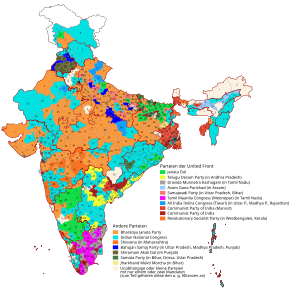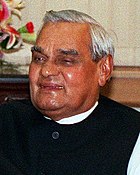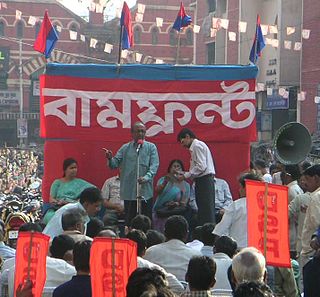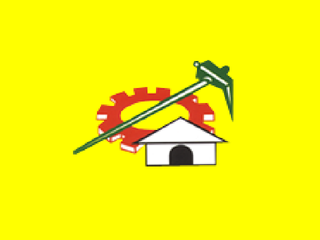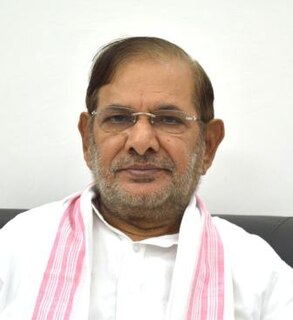The politics of India takes place within the framework of the country's constitution. India is a federal parliamentary democratic republic in which the President of India is the head of state and the Prime Minister of India is the head of government. India follows the dual polity system, i.e. a double government that consists of the central authority at the centre and states at the periphery. The constitution defines the organisational powers and limitations of both central and state governments, and it is well-recognised, rigid and considered supreme; i.e. the laws of the nation must conform to it.
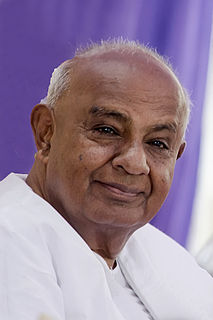
Haradanahalli Doddegowda Deve Gowda is an Indian politician who served as the 11th Prime Minister of India from 1 June 1996 to 21 April 1997. He was previously the 14th Chief Minister of Karnataka from 1994 to 1996.
The National Democratic Alliance (NDA) is a coalition of Progressive centre-right to right-wing political parties in India. At the time of its formation in 1998, it was led by the Bharatiya Janata Party (BJP) and had 13 constituent parties. Its chairman was late Prime Minister Atal Bihari Vajpayee. Also representing the alliance are L. K. Advani, former Deputy Prime Minister, who is the acting chairman of the Alliance, Narendra Modi, current Prime Minister and the Leader of the House in Lok Sabha; and Arun Jaitley, Leader of the House in Rajya Sabha and Finance minister. The coalition ruled from 1998 to 2004. The alliance returned to power in the 2014 General election with a combined vote share of 38.5%. Its leader, Narendra Modi, was sworn in as Prime Minister of India on 26 May 2014.

The Rashtriya Janata Dal is an Indian political party, based in the northern state of Bihar. The party was founded in 1997 by Lalu Prasad Yadav.
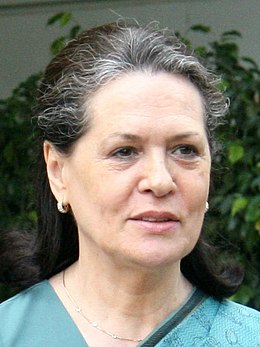
Legislative elections were held in India in four phases between 20 April and 10 May 2004. Over 670 million people were eligible to vote, electing 543 members of the 14th Lok Sabha. The Lok Sabha, or "House of the People," is the directly elected lower house of the Parliament of India.
United Progressive Alliance (UPA) is a coalition of centre-left political parties in India formed after the 2004 general election. The largest member party of the UPA is the INC, whose Former National President Sonia Gandhi is chairperson of the UPA. It formed a government with support from some other left-aligned parties in 2004.
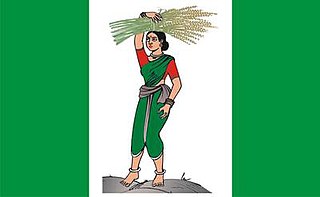
The Janata Dal (Secular) is an Indian political party led by former Prime Minister of India, H. D. Deve Gowda. The party is recognized as a State Party in the states of Karnataka and Kerala. It was formed in July 1999 by the split of Janata Dal party. It has a political presence mainly in Karnataka. In Kerala, the party is part of the Left Democratic Front.
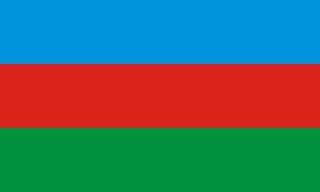
The Lok Janshakti Party (LJP) is a state political party in the state of Bihar, India. It is led by Ram Vilas Paswan. The party was formed in 2000 when Paswan split from Janata Dal (United). The party has considerable following amongst Dalits in Bihar. Currently the party is a member of the National Democratic Alliance.

India held general elections to the 7th Lok Sabha in January 1980. The Janata Party alliance came into power after the elections to the 6th Lok Sabha held in 1977, riding the public anger against the Congress and the Emergency but its position was weak. The loose coalition barely held on to a majority with only 295 seats in the Lok Sabha and never quite had a firm grip on power.

General elections were held in India in 1989 to elect the members of the 9th Lok Sabha. V. P. Singh united the entire disparate spectrum of parties including regional parties such as the Telugu Desam Party, the Dravida Munnetra Kazhagam, and the Asom Gana Parishad, forming the National Front with N.T.Rama Rao as President and V. P. Singh as convenor with additional outside support from the Bharatiya Janata Party and Communist Party of India (Marxist) led Left front they defeated Rajiv Gandhi's Congress (I) in the 1989 parliamentary elections.

The 1990s was a historic decade in India. Economic growth rates increased as policies were liberalised though not as quickly as in China. Urbanisation was also very slow compared to that in China. Rate of growth of population and fertility rates decreased. Infant mortality rates saw good rate of decrease. Two polarising trends emerged in national politics - that of the politics of social justice based on caste which followed the implementation of Mandal commission report, and of the politics of religion based on Hindu nationalism, which was marked by demolition of the Babri Masjid in 1992 and the subsequent communal riots.

The Indian general election, 2009 in Uttar Pradesh were held for 80 seats with the state going to polls across all the five phases of the general elections. The major contenders in the state were the National Democratic Alliance (NDA), Indian National Congress, Bahujan Samaj Party (BSP) and the Fourth Front. NDA consisted of the Bharatiya Janata Party (BJP) and Rashtriya Lok Dal whereas the fourth front was constituted of the Samajwadi Party (SP), Rashtriya Janata Dal (RJD) and Lok Janshakti Party (LJP).
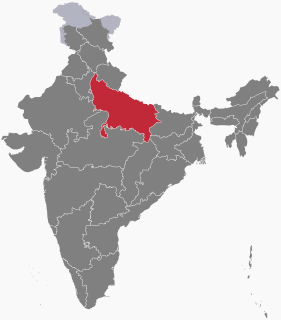
Elections in Uttar Pradesh are conducted every five years to elect the State assembly and its share of members to the Lok Sabha. The elections are conducted in accordance with the Constitution of India. The Assembly of Uttar Pradesh creates laws regarding the conduct of local body elections unilaterally while any changes by the state legislature to the conduct of state level elections need to be approved by the Parliament of India. In addition, the state legislature may be dismissed by the Parliament according to Article 356 of the Indian Constitution and President's rule may be imposed. There are 403 assembly constituencies and 80 Lok Sabha constituencies(seats). The 80 Lok Sabha constituencies of Uttar Pradesh are a deciding factor for who holds power in the 16th Lok Sabha. The state has conducted 17 assembly elections and 16 Lok Sabha elections since independence.
Third Front in Indian politics refers to various alliances formed by smaller parties at various points of time since 1989 to offer a third option to Indian voters, challenging the Indian National Congress and Bhartiya Janata Party.

Mulayam Singh Yadav is an Indian politician from Uttar Pradesh and the founder of the Samajwadi Party. He served for three non-consecutive terms as the Chief Minister of Uttar Pradesh from 1989 to 1991, 1993 to 1995, and 2003 to 2007 respectively and also served as the Minister of Defence of India from 1996 to 1998 in the United Front government. He currently serves as the Member of Parliament in the Lok Sabha from Azamgarh.
Elections in the Republic of India in 2018 included by-elections to the Lok Sabha, elections to the Rajya Sabha, elections to legislative assemblies of eight states and numerous other by-elections to state legislative assemblies, councils and local bodies.
Ratnamala Dhareshwar Savanur is an Indian politician formerly affiliated to the Janata Dal and now Janata Dal (Secular). She was a member of the 11th Lok Sabha and served as the Minister of State for Planning and Implementation in Gujral ministry.
